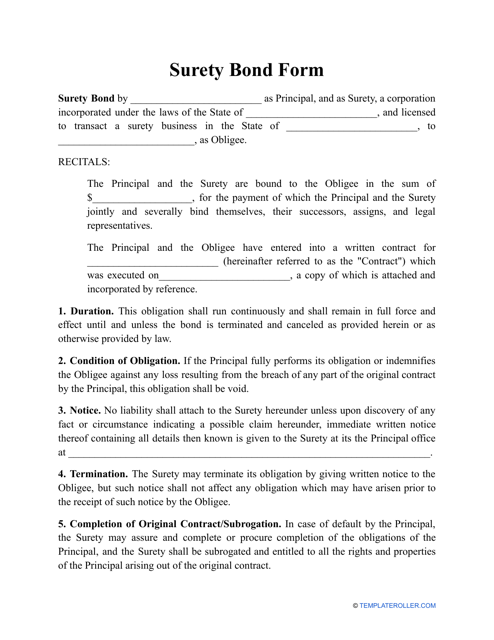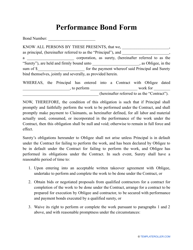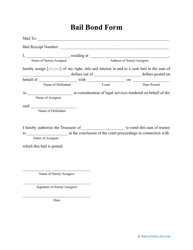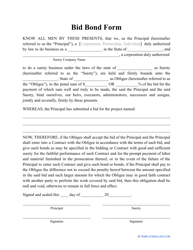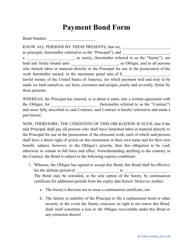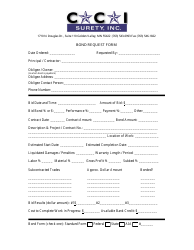Surety Bond Form
What Is a Surety Bond?
A Surety Bond is a three-party contract that guarantees performance under the main agreement signed by a principal and an obligee. The principal is under the obligation to perform some kind of work for the obligee, and the third party - the guarantor - promises to compensate the obligee if the principal fails to comply with their responsibilities. Whether you enter into transactions in the private or public sector, this legally binding document will cover the default of the principal.
You can find a Surety Bond template through the link below. It is possible to customize this document to your liking but at a minimum, a Surety Bond form should identify the parties, include the amount of the bond, refer to the contract signed by the principal and the obligee, indicate the duration of the bond, describe the parties' responsibility to submit a notice before filing a claim on the bond, and contain the signatures of the principal and surety. If you believe this contract requires extra protection, you can obtain a notary seal for your bond - notarization is common when you complete a Corporate Surety Bond to prove to your client your business can be trusted.
How to Get a Surety Bond?
Follow these steps to get the right Surety Bond and safeguard the finances of the customer:
- Decide what kind of a Surety Bond you require - if you have not yet landed a contract with a prospective client, you may have to prepare a Bid Bond so that you are chosen as a contractor. In case you are already negotiating the agreement with the customer, a Performance Bond will verify the guarantor's promise to vouch for your future work.
- Contact your business partners and associates to learn whether they have worked with Surety Bond companies in the past and get a recommendation . Alternatively, you may contact your bank or insurance provider to find out if they offer bond services or browse online to find a local bond company.
- Work with the guarantor to determine the cost of the bond and other crucial terms such as the length of your agreement and the price you have to pay to establish the bond . Often, the guarantor will ask the business to pledge company assets to cover the costs of the claim or be prepared to take out a loan to deal with the financial burden of the claim.
- Once the Surety Bond is signed, you need to contact the obligee and submit a copy of the bond to them . If you fail to meet the obligations listed in your agreement, the obligee will be able to file a claim based on your Surety Bond and get compensation from the financial institution - the latter will request compensation from you once the client's demands are satisfied.
How Much Is a Surety Bond?
Different types of Surety Bond have different costs. However, on average, the Surety Bond cost varies between 1% and 10% of the total amount of the bond. For instance, to purchase a $20,000 bond policy the principal may have to pay between $200 and $2,000. Note that the premium paid for the Surety Bond insurance will depend on several factors - if the financial institution that agreed to issue a bond has worked with the principal for years and the latter has a positive credit history, it is possible the guarantor will offer them better rates. The cost of the Surety Bond may also vary based on your location, the type of bond, and the industry you represent.
Haven't found the template you're looking for? Take a look at the related templates below:
